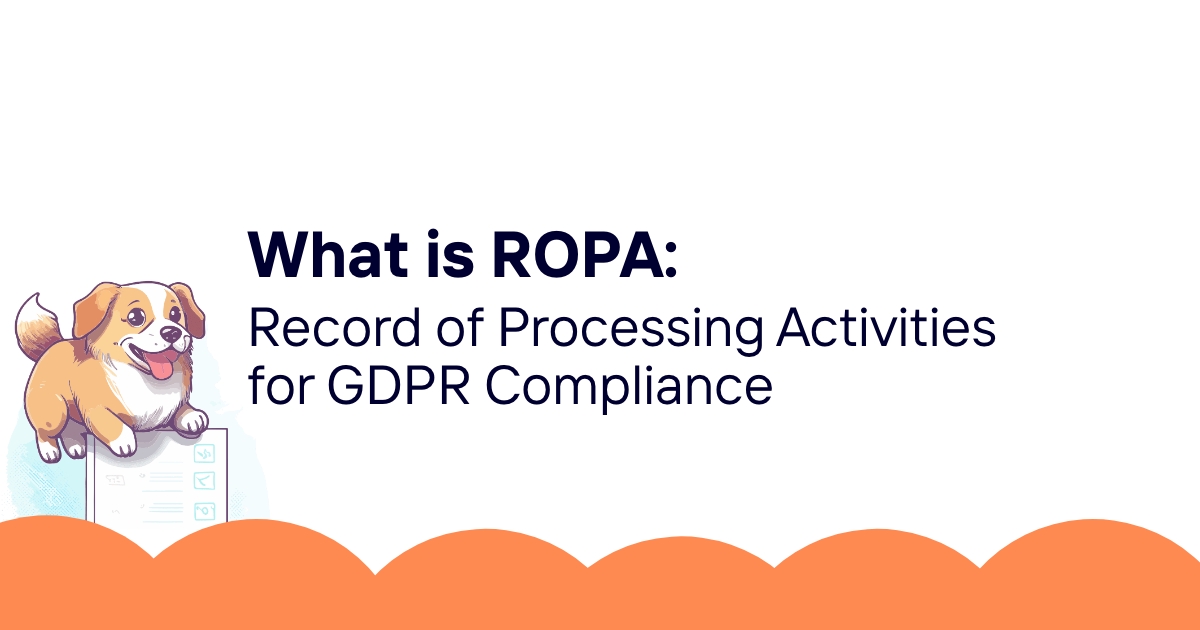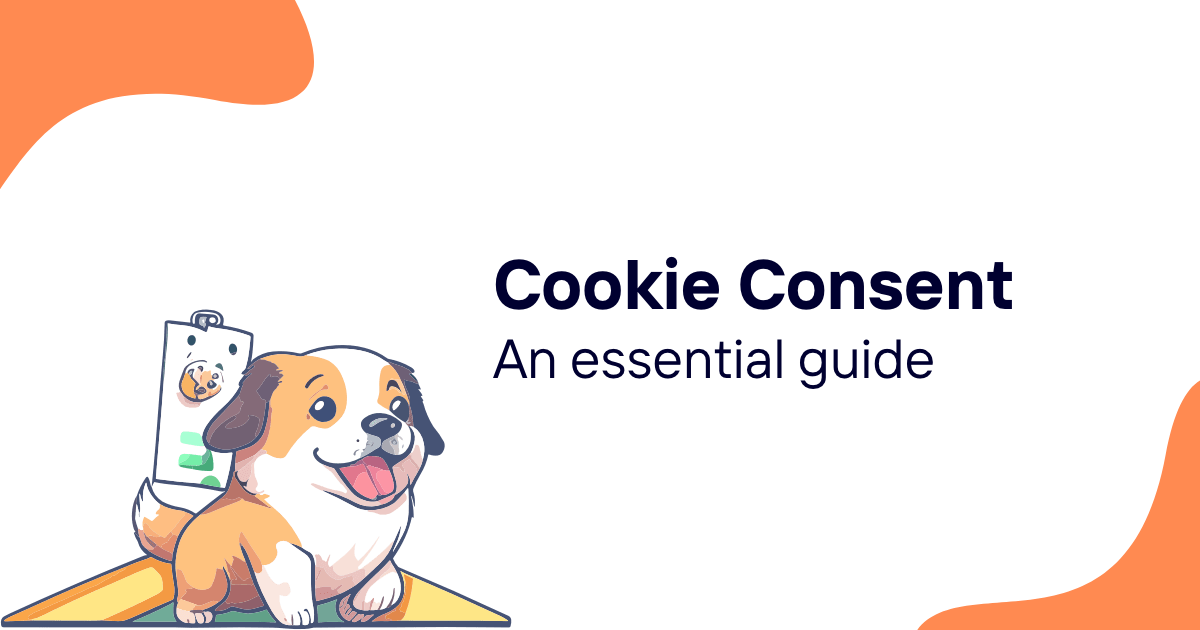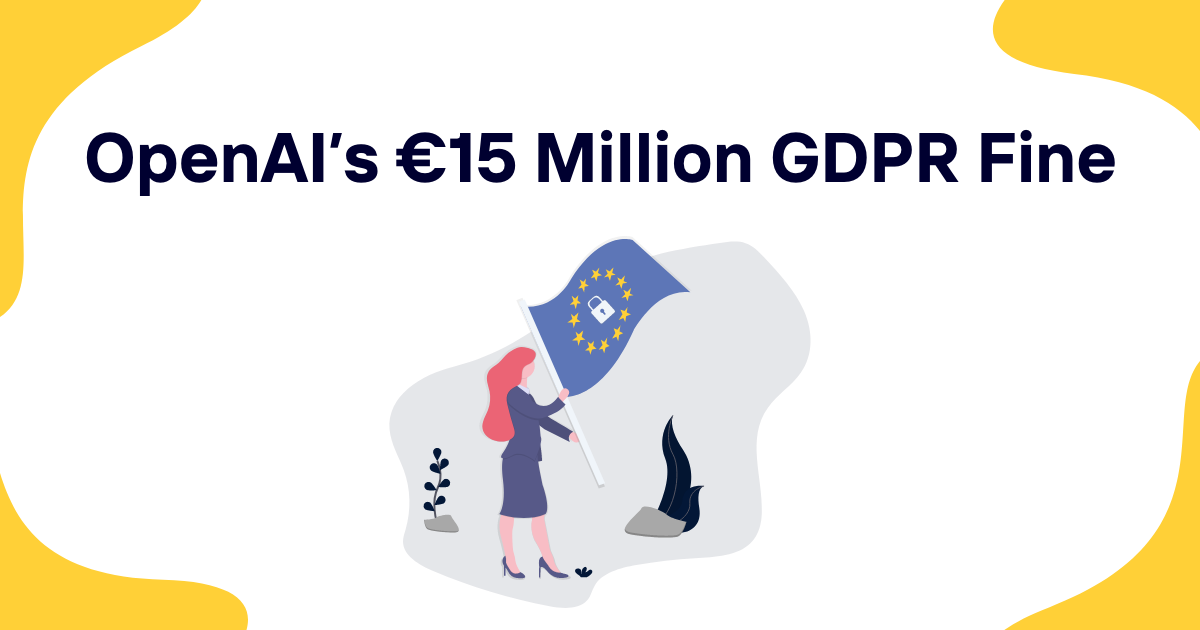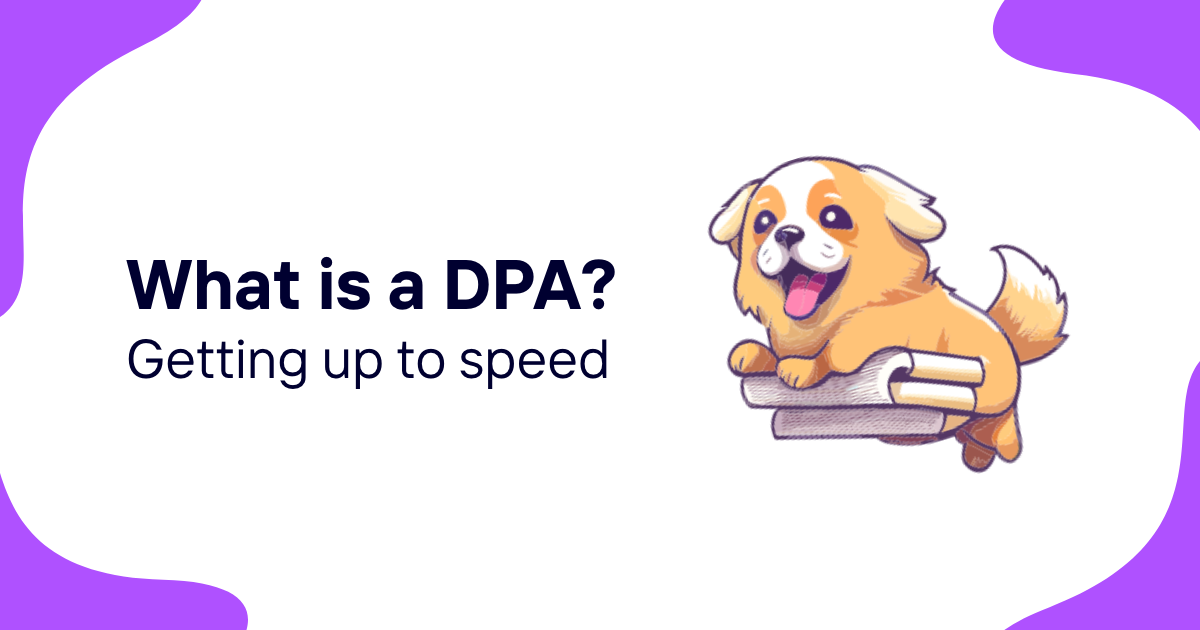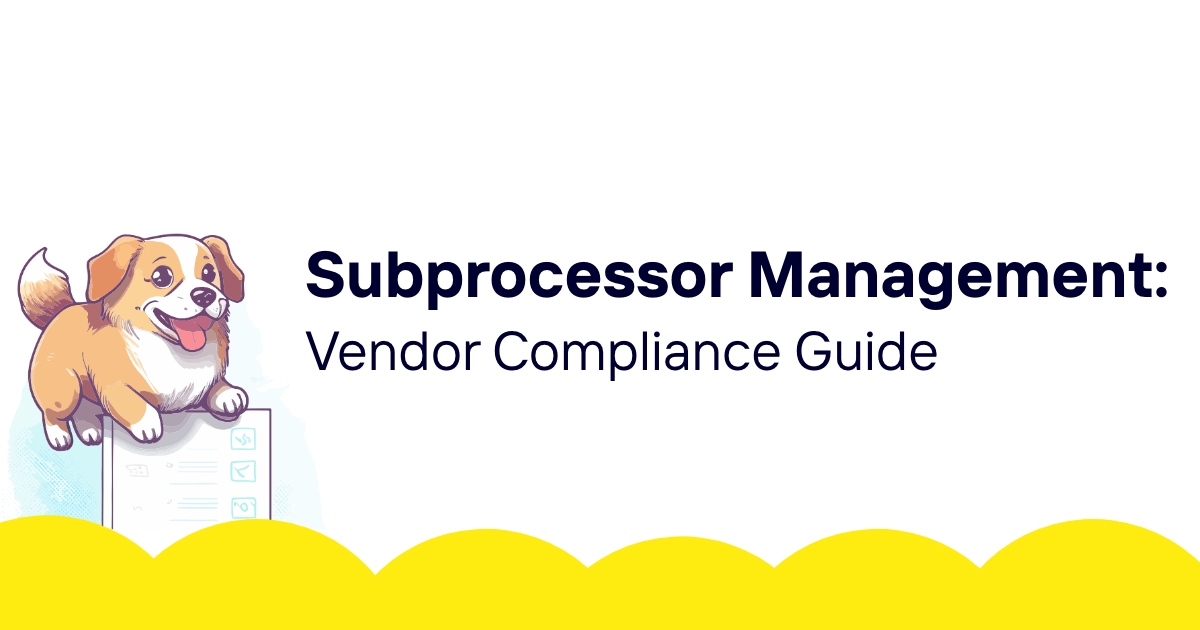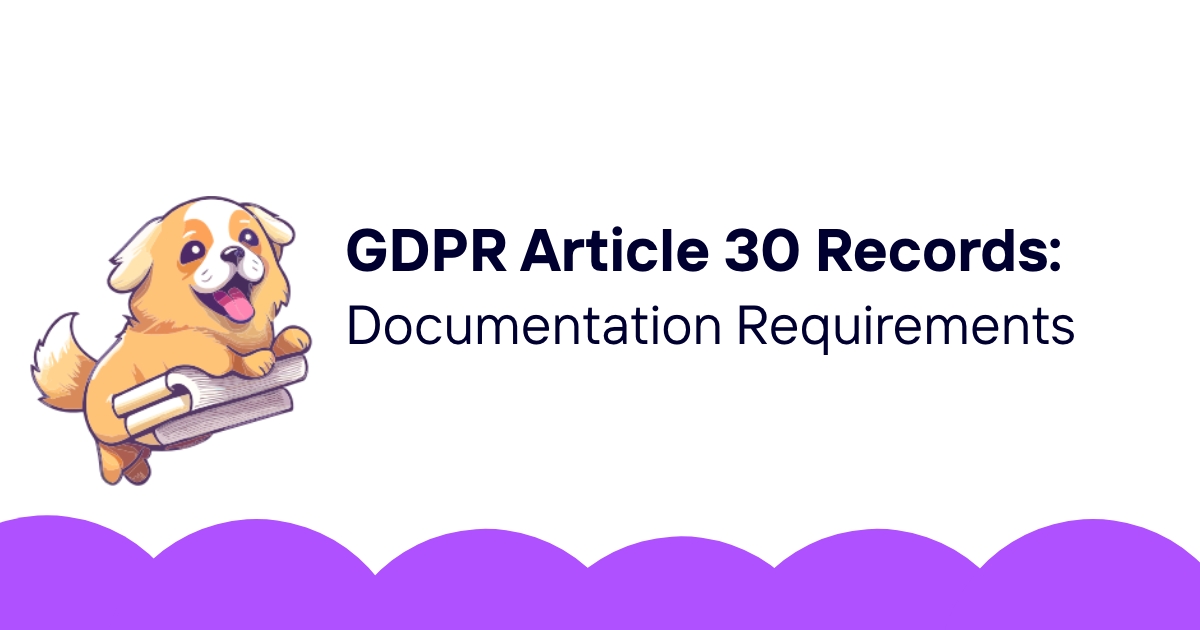Spanish companies operating in today's global marketplace face increasingly complex data protection requirements. The concept of "ROPA" appears in two distinct contexts that often create confusion: the Spanish acronym for data protection compliance and the broader business terminology. This distinction matters more than most organizations realize, particularly when dealing with European data protection laws.
Table of Contents
- Understanding ROPA in data protection context
- Legal foundation under GDPR Article 30
- ROPA components and structure
- Implementation requirements for Spanish businesses
- Documentation standards and best practices
- Common compliance challenges
- Industry-specific considerations
- Technology solutions for ROPA management
- Regulatory oversight and penalties
- Future developments in processing records
Understanding ROPA in data protection context
ROPA stands for "Registro de Operaciones de Procesamiento de Datos" in Spanish, which translates to Record of Processing Activities in English. This document serves as the cornerstone of GDPR compliance for organizations handling personal data within the European Union.
The record functions as a comprehensive inventory of all data processing activities conducted by an organization. Think of it as a detailed map showing where personal data travels throughout your business operations. Every department that touches customer information, employee records, or any other personal data must document their activities in this central registry.
But here's where it gets interesting (and slightly frustrating for compliance officers): many businesses confuse this with other business acronyms or processes. The data protection ROPA specifically refers to the systematic documentation required under European law, not general business process mapping or other operational records.
Organizations often struggle with the scope of what constitutes "processing" under GDPR. The regulation defines processing broadly – it includes collection, storage, organization, structuring, adaptation, retrieval, consultation, use, disclosure, dissemination, alignment, restriction, erasure, and destruction of personal data. That's practically everything you do with personal information.
Spanish companies particularly benefit from maintaining robust ROPAs because they provide clear evidence of compliance during regulatory inspections. The Spanish Data Protection Agency (AEPD) has shown increasing interest in reviewing these records during audits, making them a critical compliance tool rather than just paperwork.
Legal foundation under GDPR Article 30
Article 30 of the GDPR establishes the legal requirement for maintaining records of processing activities. This isn't optional – it's a mandatory obligation for most organizations processing personal data within the EU.
The regulation distinguishes between controllers and processors, each having specific documentation requirements. Controllers must maintain records that include the name and contact details of the controller, purposes of processing, categories of data subjects and personal data, categories of recipients, transfers to third countries, time limits for erasure, and general descriptions of technical and organizational security measures.
Processors face slightly different requirements. They must document the name and contact details of the processor and each controller, categories of processing carried out, transfers to third countries, and general descriptions of technical and organizational security measures.
Small organizations with fewer than 250 employees receive some relief from these requirements, but exemptions are limited. The processing must not be likely to result in a risk to individuals' rights and freedoms, must be occasional, and cannot include special categories of data or criminal conviction data.
Spanish businesses often overlook the dynamic nature of these records. They're not static documents created once and forgotten. As business operations evolve, data flows change, and new processing activities begin, the ROPA must reflect these changes. Some companies treat it like an annual compliance exercise, but that approach creates significant gaps in documentation.
The legal implications extend beyond simple record-keeping. These documents serve as evidence during legal proceedings, regulatory investigations, and data breach incidents. A well-maintained ROPA can demonstrate due diligence and good faith compliance efforts, potentially reducing penalties during enforcement actions.
ROPA components and structure
Creating an effective ROPA requires understanding its essential components and organizing information in a logical, accessible format. Each processing activity entry should contain specific elements that paint a complete picture of data handling practices.
The controller information section identifies who makes decisions about processing purposes and means. This includes legal entity names, contact information, and data protection officer details where applicable. Many Spanish companies struggle with this section when dealing with complex corporate structures or joint ventures.
Purpose descriptions require careful attention to specificity. Vague statements like "business operations" or "customer service" don't meet regulatory standards. Instead, organizations should describe specific business functions: "processing customer orders for product delivery," "managing employee payroll and benefits," or "conducting marketing campaigns for existing customers."
Categories of data subjects help identify whose information you're processing. Common categories include customers, employees, suppliers, website visitors, newsletter subscribers, and job applicants. But these categories should reflect your actual business relationships, not generic templates.
Personal data categories demand precision about information types. Rather than listing "personal data" or "contact information," specify: names, email addresses, phone numbers, billing addresses, IP addresses, employment history, performance evaluations, or health information for occupational health purposes.
Recipients and third parties require detailed documentation. This includes internal departments accessing data, external service providers, government agencies, and business partners. Spanish companies often underestimate the complexity of their data sharing relationships, particularly when dealing with cloud services or international suppliers.
Transfer documentation becomes critical when data leaves the European Economic Area. Organizations must identify destination countries, adequacy decisions, appropriate safeguards, and legal bases for transfers. Brexit created additional complexity for Spanish companies with UK operations or suppliers.
Retention periods should reflect both legal requirements and business necessity. Different data types may have varying retention schedules based on tax laws, employment regulations, customer service needs, or industry-specific requirements. Generic retention statements don't provide adequate protection during regulatory scrutiny.
Implementation requirements for Spanish businesses
Spanish organizations face specific implementation challenges when developing their ROPAs. The Spanish Data Protection Agency provides guidance that sometimes differs in emphasis from other EU regulators, creating nuances that affect documentation approaches.
Starting with data discovery represents the most challenging aspect for most businesses. Organizations typically underestimate the volume and variety of personal data they process. Marketing departments maintain prospect lists, HR systems contain employee information, IT departments log user activities, finance teams process payment data, and customer service maintains interaction records. Each department often operates independently, creating information silos that complicate comprehensive documentation.
Mapping data flows requires technical understanding combined with business process knowledge. Data doesn't stay put – it moves between systems, departments, and organizations throughout its lifecycle. Customer information collected through websites might feed CRM systems, trigger marketing automation, generate financial records, and create support tickets. Each stage requires documentation in the ROPA.
Spanish companies benefit from involving legal, IT, and business teams in ROPA development. Legal teams understand regulatory requirements, IT teams know technical data flows, and business teams comprehend operational purposes. This collaborative approach produces more accurate and complete records.
The documentation process should begin with high-level business processes before drilling down into technical details. Start by identifying major business functions: customer acquisition, order processing, employee management, supplier relationships, and regulatory reporting. Each function likely involves multiple processing activities that require separate ROPA entries.
Template approaches can provide structure, but blind reliance on generic templates creates compliance risks. Spanish businesses operate in diverse sectors with unique data processing requirements. A construction company's ROPA will differ significantly from a financial services firm's documentation, even if both use similar software systems.
Regular review cycles ensure ROPA accuracy and completeness. Business operations change frequently – new software implementations, process improvements, partner relationships, and service offerings all affect data processing activities. Quarterly reviews typically provide adequate frequency for most organizations, though rapidly growing companies may need monthly updates.
Documentation standards and best practices
Effective ROPA documentation requires balancing comprehensiveness with usability. Over-detailed records become difficult to maintain and navigate, while oversimplified documentation fails to meet regulatory standards or provide practical compliance value.
Structure your records logically, grouping related processing activities together. Many organizations organize by department or business function, making it easier for teams to review and update their sections. Alternative approaches include organizing by data subject categories or processing purposes, depending on business complexity and regulatory focus.
Use clear, specific language that non-technical readers can understand. Regulatory authorities, senior management, and external auditors may review these documents. Technical jargon and internal acronyms create barriers to understanding and may suggest inadequate oversight of data processing activities.
Version control becomes critical as records evolve. Maintain historical versions to demonstrate compliance efforts over time and track changes in processing activities. Date stamps, change logs, and approval workflows provide audit trails that regulators value during investigations.
Cross-referencing enhances usability and completeness. Link ROPA entries to relevant policies, procedures, contracts, and technical documentation. This approach helps reviewers understand how documented activities connect to broader compliance frameworks and operational controls.
Regular validation ensures accuracy and identifies gaps. Compare ROPA entries against actual system configurations, business processes, and contractual arrangements. Discrepancies often reveal undocumented processing activities or outdated information that requires correction.
Consider multiple output formats for different audiences. Detailed technical records serve compliance purposes, but executive summaries help senior management understand data protection risks and compliance status. External stakeholders like customers or partners may need simplified versions that explain data handling practices without revealing sensitive operational details.
Common compliance challenges
Spanish organizations encounter predictable obstacles when implementing and maintaining ROPAs. Understanding these challenges helps businesses prepare appropriate solutions and avoid common pitfalls that create compliance gaps.
Resource constraints top the list of implementation challenges. Creating comprehensive processing records requires significant time investment from multiple departments. Small and medium businesses often lack dedicated data protection staff, forcing existing employees to balance ROPA development with regular responsibilities. This creates pressure to rush documentation or rely on incomplete information.
Technical complexity poses another significant hurdle. Modern business operations involve numerous software systems, cloud services, and data integrations. Mapping data flows across these technical environments requires specialized knowledge that many organizations lack internally. IT departments may understand system architectures but lack insight into business purposes and legal requirements.
Change management creates ongoing compliance challenges. Business operations evolve continuously through new products, process improvements, technology upgrades, and organizational restructuring. Each change potentially affects data processing activities, but many organizations lack systematic approaches for updating their ROPAs when operational changes occur.
Cross-border operations complicate documentation requirements. Spanish companies with international operations must consider multiple jurisdictions' requirements while maintaining coherent global documentation. Different countries' privacy laws may require additional or conflicting information in processing records.
Third-party relationships introduce documentation dependencies. Organizations rely on vendors, partners, and service providers for various business functions, but they don't always have complete visibility into these third parties' data processing activities. Contractual agreements should address ROPA requirements, but many existing contracts lack adequate provisions.
Legacy system integration presents technical and documentation challenges. Older software systems may lack modern data management features, making it difficult to track data flows or implement privacy controls. Documentation must acknowledge these limitations while describing compensating measures that maintain compliance.
Staff turnover affects institutional knowledge about data processing activities. When employees leave, they take understanding of specific processes, system configurations, and business relationships. Without proper knowledge transfer procedures, organizations may lose critical information needed for accurate ROPA maintenance.
Industry-specific considerations
Different industries face unique ROPA requirements based on their data processing activities, regulatory environment, and operational characteristics. Spanish businesses should understand how their sector affects documentation approaches and compliance priorities.
Financial services organizations process extensive personal data for various regulated purposes. Customer onboarding requires identity verification, creditworthiness assessment, and regulatory reporting. Investment activities may involve processing beneficial ownership information, transaction monitoring for anti-money laundering purposes, and regulatory disclosures. Insurance companies add claims processing, risk assessment, and actuarial analysis to their documentation requirements.
Healthcare organizations handle special category personal data requiring enhanced protection. Patient records, medical imaging, laboratory results, and treatment plans all require careful documentation. Research activities, insurance coordination, and public health reporting create additional processing activities with specific legal bases and retention requirements.
Retail and e-commerce businesses typically process customer data for marketing, order fulfillment, and customer service purposes. Loyalty programs, personalized recommendations, and behavioral analytics create complex data processing scenarios. Payment processing, fraud prevention, and customer communications add layers of complexity that require detailed documentation.
Manufacturing companies often focus on employee data, supplier relationships, and quality management systems. Industrial Internet of Things implementations may involve processing operational data that includes personal information. Supply chain transparency requirements increasingly demand documentation of data sharing with business partners.
Technology companies frequently process data for multiple purposes including service delivery, product development, and business analytics. Software-as-a-Service providers must document both their own processing activities and their customers' use of their platforms. Data processing for artificial intelligence and machine learning applications requires special attention to purpose definitions and technical measures.
Educational institutions process student information for academic, administrative, and compliance purposes. Research activities may involve processing personal data under different legal bases with varying retention requirements. Alumni relations and fundraising activities create ongoing processing relationships that extend beyond formal educational periods.
Technology solutions for ROPA management
Manual ROPA maintenance becomes impractical for organizations with complex data processing environments. Technology solutions can automate documentation, improve accuracy, and reduce ongoing maintenance burdens while providing better compliance oversight capabilities.
Dedicated privacy management platforms offer comprehensive ROPA functionality integrated with broader compliance management features. These solutions typically include workflow management, automated data discovery, risk assessment tools, and regulatory reporting capabilities. They can integrate with existing business systems to maintain current information about processing activities.
Data mapping tools help organizations understand information flows across technical environments. These solutions can automatically discover databases, applications, and data repositories while documenting connections between systems. Some advanced tools use artificial intelligence to classify data types and identify potential privacy risks.
Documentation automation reduces manual effort while improving consistency. Template-based approaches can generate ROPA entries from standardized questionnaires, ensuring completeness while allowing customization for specific business requirements. Automated workflows can route documentation for review and approval by appropriate stakeholders.
Integration capabilities enhance accuracy and reduce duplication of effort. ROPA management solutions should connect with existing business systems including customer relationship management, human resources, enterprise resource planning, and security information management platforms. Real-time integration ensures documentation reflects current operational reality.
Reporting and analytics features provide compliance insights beyond basic documentation requirements. Organizations can analyze data processing patterns, identify compliance gaps, track remediation activities, and generate regulatory reports. Executive dashboards can summarize compliance status for senior management oversight.
Collaboration features support distributed documentation responsibilities. Different departments may need to contribute information about their processing activities while maintaining appropriate access controls. Version control and audit trails ensure accountability and support compliance demonstrations.
Regulatory oversight and penalties
The Spanish Data Protection Agency has demonstrated increasing focus on ROPAs during compliance assessments and enforcement actions. Organizations should understand regulatory expectations and potential consequences of inadequate documentation.
Inspection priorities often center on documentation completeness and accuracy. Regulators want to see comprehensive coverage of processing activities with sufficient detail to understand data protection risks and controls. Superficial or template-driven documentation that doesn't reflect actual business operations raises concerns about overall compliance effectiveness.
Penalty considerations extend beyond simple documentation failures. Inadequate ROPAs often indicate broader compliance weaknesses including insufficient data protection oversight, inadequate risk assessment processes, and poor accountability mechanisms. Regulators may view documentation failures as evidence of systematic compliance failures warranting significant penalties.
Enforcement trends show increasing coordination between European data protection authorities. Spanish companies with international operations may face coordinated enforcement actions if their ROPA documentation reveals cross-border compliance issues. The one-stop-shop mechanism under GDPR can result in penalties that affect global operations.
Remediation expectations focus on sustainable compliance improvements rather than quick fixes. Organizations that discover ROPA deficiencies should develop comprehensive improvement plans that address root causes of documentation failures. Superficial corrections without operational changes are unlikely to satisfy regulatory expectations.
Best practice approaches for regulatory interactions include proactive transparency about documentation limitations, clear improvement timelines with measurable milestones, and regular progress reporting. Organizations that demonstrate good faith compliance efforts typically receive more favorable treatment during enforcement proceedings.
Due diligence benefits extend beyond regulatory compliance. Well-maintained ROPAs support legal defenses in data breach litigation, facilitate merger and acquisition due diligence, and demonstrate corporate responsibility to customers and business partners. The investment in proper documentation typically pays dividends across multiple business contexts.
Future developments in processing records
ROPA requirements continue evolving as data protection regulations mature and technology capabilities advance. Spanish organizations should anticipate future developments that may affect their documentation approaches and compliance strategies.
Artificial intelligence applications create new processing scenarios that challenge traditional documentation approaches. Machine learning systems may process personal data in ways that are difficult to predict or describe in advance. Organizations developing AI capabilities should consider how these activities fit within existing ROPA frameworks and what additional documentation may be required.
International data transfer regulations are becoming increasingly complex as countries develop new privacy laws and restrict cross-border data flows. Spanish companies with global operations may need to enhance their ROPA documentation to address multiple jurisdictions' requirements while maintaining operational efficiency.
Technology automation offers opportunities to improve ROPA accuracy and reduce maintenance costs. Automated data discovery, real-time system monitoring, and intelligent documentation generation may transform how organizations approach processing record requirements. Early adopters of these technologies may gain competitive advantages in compliance efficiency.
Standardization initiatives aim to harmonize ROPA requirements across different sectors and jurisdictions. Industry groups and regulatory bodies are developing common frameworks that could simplify compliance for organizations operating in multiple contexts. Spanish companies should monitor these developments for opportunities to streamline their documentation processes.
Stakeholder expectations continue expanding beyond basic regulatory compliance. Customers, investors, and business partners increasingly expect transparency about data processing activities. Enhanced ROPA practices may become competitive differentiators that support business development and relationship management objectives.
Risk-based approaches to ROPA documentation may become more sophisticated as organizations gain experience with data protection compliance. Rather than treating all processing activities equally, future frameworks may emphasize documentation depth based on privacy risk levels, data sensitivity, and potential impact on individuals.
Spanish businesses navigating these complex data protection requirements benefit significantly from comprehensive compliance solutions. Managing ROPA documentation alongside other GDPR obligations requires specialized tools and expertise that many organizations lack internally.
ComplyDog provides an integrated platform that simplifies ROPA creation, maintenance, and regulatory reporting while supporting broader data protection compliance efforts. The solution combines automated data discovery with workflow management, ensuring your processing records remain accurate and complete as business operations evolve. By centralizing compliance management through platforms like ComplyDog, Spanish organizations can focus on their core business activities while maintaining robust data protection practices that meet regulatory standards and support sustainable growth.
